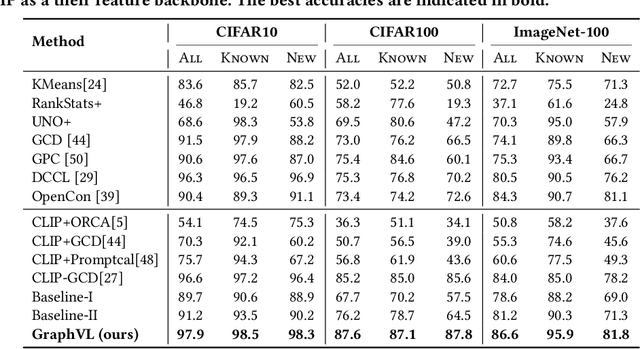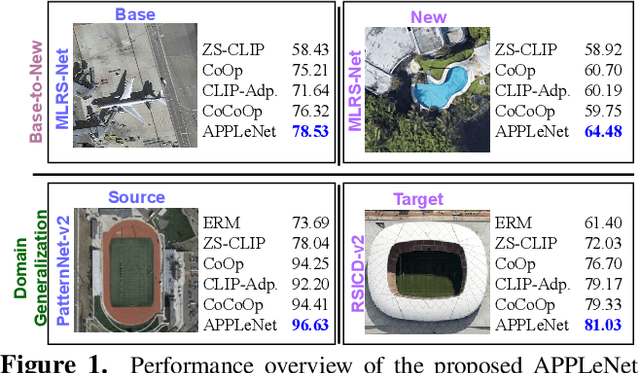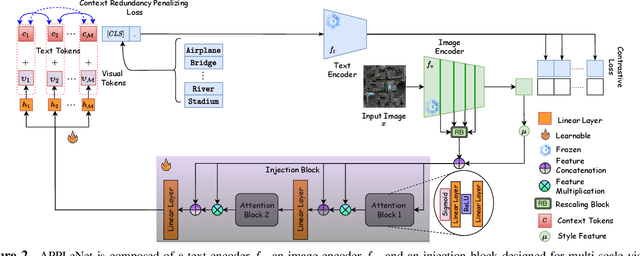Bhupendra Solanki
GraphVL: Graph-Enhanced Semantic Modeling via Vision-Language Models for Generalized Class Discovery
Nov 04, 2024



Abstract:Generalized Category Discovery (GCD) aims to cluster unlabeled images into known and novel categories using labeled images from known classes. To address the challenge of transferring features from known to unknown classes while mitigating model bias, we introduce GraphVL, a novel approach for vision-language modeling in GCD, leveraging CLIP. Our method integrates a graph convolutional network (GCN) with CLIP's text encoder to preserve class neighborhood structure. We also employ a lightweight visual projector for image data, ensuring discriminative features through margin-based contrastive losses for image-text mapping. This neighborhood preservation criterion effectively regulates the semantic space, making it less sensitive to known classes. Additionally, we learn textual prompts from known classes and align them to create a more contextually meaningful semantic feature space for the GCN layer using a contextual similarity loss. Finally, we represent unlabeled samples based on their semantic distance to class prompts from the GCN, enabling semi-supervised clustering for class discovery and minimizing errors. Our experiments on seven benchmark datasets consistently demonstrate the superiority of GraphVL when integrated with the CLIP backbone.
APPLeNet: Visual Attention Parameterized Prompt Learning for Few-Shot Remote Sensing Image Generalization using CLIP
Apr 12, 2023



Abstract:In recent years, the success of large-scale vision-language models (VLMs) such as CLIP has led to their increased usage in various computer vision tasks. These models enable zero-shot inference through carefully crafted instructional text prompts without task-specific supervision. However, the potential of VLMs for generalization tasks in remote sensing (RS) has not been fully realized. To address this research gap, we propose a novel image-conditioned prompt learning strategy called the Visual Attention Parameterized Prompts Learning Network (APPLeNet). APPLeNet emphasizes the importance of multi-scale feature learning in RS scene classification and disentangles visual style and content primitives for domain generalization tasks. To achieve this, APPLeNet combines visual content features obtained from different layers of the vision encoder and style properties obtained from feature statistics of domain-specific batches. An attention-driven injection module is further introduced to generate visual tokens from this information. We also introduce an anti-correlation regularizer to ensure discrimination among the token embeddings, as this visual information is combined with the textual tokens. To validate APPLeNet, we curated four available RS benchmarks and introduced experimental protocols and datasets for three domain generalization tasks. Our results consistently outperform the relevant literature and code is available at https://github.com/mainaksingha01/APPLeNet
 Add to Chrome
Add to Chrome Add to Firefox
Add to Firefox Add to Edge
Add to Edge